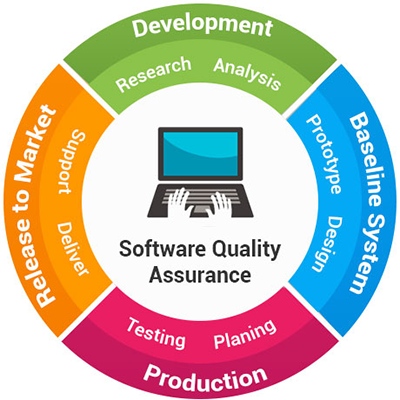Software Quality Assurance

To be able to respond by expanding and enhancing offerings and searching for innovative customer products that are appealing and achievable, they expect some degree of stability in the applications and system that will engineer and service the delivery to the end customer.
Our service delivery will help resolve the following:
- Individual application challenges - Slow response times and performance issues
- Application deviation (functionality) from defined business requirements
- Astronomical cost(s) associated with production Support after go-live
- Increased user complaints and concerns regarding application performance
- Poor return on investment (ROI) due to abandonment of application
- Poor service delivery to customers resulting from poor performance issues
- Inaccurate report generation resulting from lack of data integrity
The scope of our service delivery will entail at a minimum the following:
- Unit Testing: Verifying that an individual component meets technical design specifications. (Performed by Developers in the Development Environment)
- System Testing: Verifying that the inter-related elements function correctly together within the application and support the business processes.
- Regression Testing: Retesting sub-systems/modules/units to insure that modifications to one sub-system/module/unit do not cause unexpected results in another sub-system/module/unit. This is also known as ripple effect testing. Regression testing is necessary because many times modifications in one part of the code cause unexpected problems in a “totally unrelated” area of the code.
- End to End/ Integration Testing: Verifying that the functional and business requirements to be fulfilled by the solution are tested together from end-to-end, including external systems (legacy and third-party).
- User Acceptance Testing: Business certification of the solution; making sure the existing functionality still works and is compatible with the new;(Performed by the Business Partners). Solicit feedback and obtain sign-off of the proposed system from the Business
- Performance Testing: Performance is an indicator of how well a software system or component meets its requirements for timeliness.
- Scalability Testing: Is the ability of a system to continue to meet its response time or throughput objectives as the demand for the software function increases.
- Load Testing: Determines the systems behavior under various workloads. The objective of load testing is to quantify how the systems components react as the workload is gradually increased.
- Stress Testing: determines either the breaking point of a system or the area where performance becomes unacceptable. In other words, stress testing reveals the maximum service level that a system can achieve.
